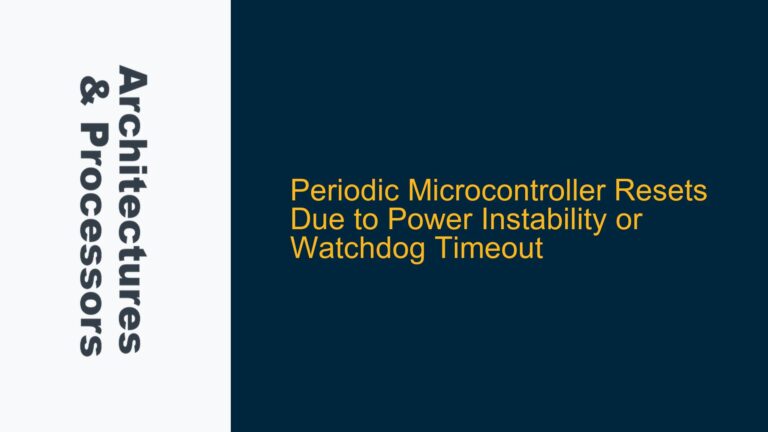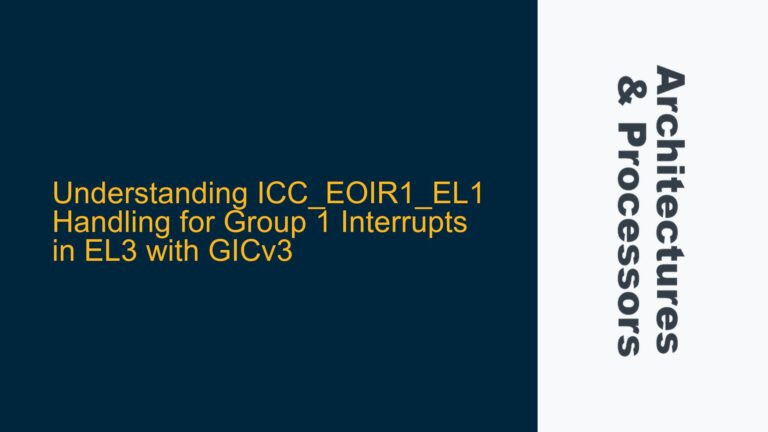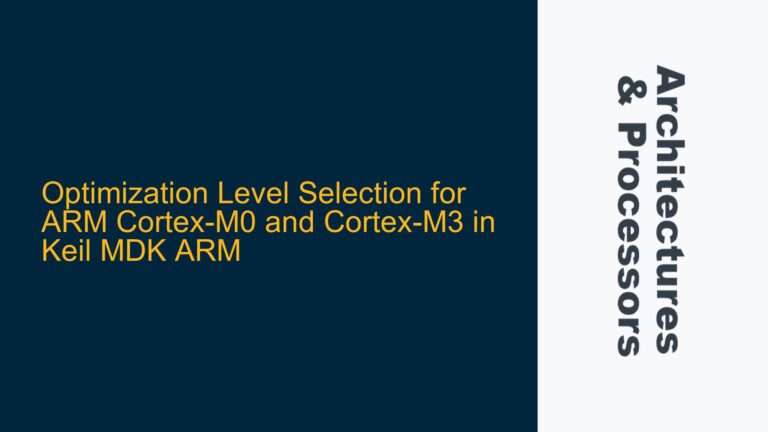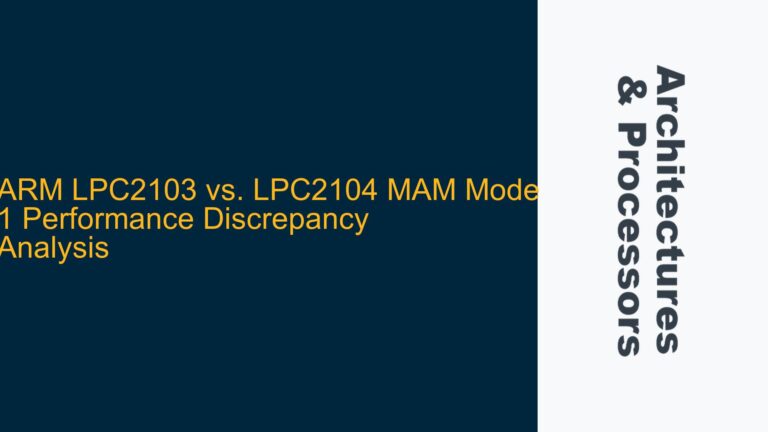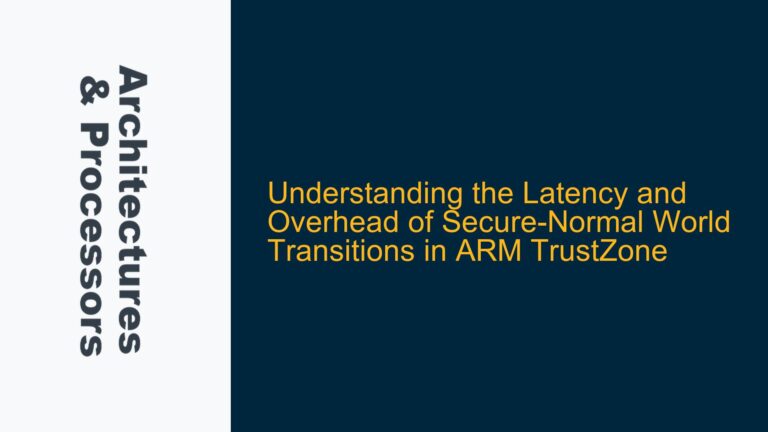APB Protocol Limitations and 64-bit Data Bus Requirements
The Advanced Peripheral Bus (APB) is a key component of the ARM AMBA (Advanced Microcontroller Bus Architecture) protocol family, designed for low-bandwidth, low-complexity peripheral interfaces. By default, the APB protocol specifies a 32-bit data bus width, which is sufficient for most peripheral register accesses. However, certain applications, such as high-performance data acquisition systems, cryptographic accelerators, or memory-mapped peripherals with wide data paths, may require a 64-bit data bus to meet their throughput or data width requirements.
The APB protocol’s simplicity is one of its strengths, but this simplicity also imposes limitations. The protocol does not natively support data bus widths beyond 32 bits. This limitation stems from the protocol’s design philosophy, which prioritizes ease of implementation and low area overhead over flexibility. For instance, the PADDR (Peripheral Address Bus) and PWDATA/PRDATA (Peripheral Write/Read Data Buses) are tightly coupled to the 32-bit paradigm, with address increments and data transfers aligned to 32-bit boundaries.
When considering a 64-bit data bus, several architectural and protocol-level challenges arise. First, the PADDR bus, which is typically aligned to 32-bit addresses, would need to be reinterpreted to handle 64-bit data transfers. This reinterpretation could lead to addressing ambiguities, especially when interfacing with standard APB peripherals that expect 32-bit aligned addresses. Second, the PSTRB (Peripheral Write Strobe) signal, which indicates valid byte lanes during write operations, would need to be extended from 4 bits (for 32-bit data) to 8 bits (for 64-bit data). This extension introduces additional complexity in both the master and slave interfaces.
Furthermore, the APB protocol’s handshake mechanism, which relies on the PSEL (Peripheral Select), PENABLE (Peripheral Enable), and PREADY (Peripheral Ready) signals, assumes a 32-bit data transfer model. Extending the data bus to 64 bits would require redefining these handshake signals to accommodate wider data paths, potentially breaking compatibility with existing APB components.
Architectural and Protocol-Level Implications of a 64-bit APB Data Bus
The decision to extend the APB data bus to 64 bits has significant implications for both the architecture and the protocol compliance of the system. At the architectural level, the primary challenge is ensuring that the wider data bus does not introduce timing violations or resource conflicts. For example, the increased data width may necessitate wider memory arrays or register files in the peripherals, which could impact area and power consumption.
From a protocol perspective, the most critical issue is maintaining compatibility with the existing APB ecosystem. The APB protocol defines specific behaviors for address alignment, data transfer granularity, and handshake signaling, all of which are optimized for a 32-bit data bus. Deviating from these behaviors by implementing a 64-bit data bus could result in non-compliant designs that fail to interoperate with standard APB components.
One specific challenge is the handling of address increments. In a standard APB system, the PADDR bus increments by 4 bytes (32 bits) for each transfer. With a 64-bit data bus, the address increment would need to be 8 bytes, which could cause misalignment issues when interfacing with 32-bit peripherals. For example, a 64-bit write operation to a 32-bit peripheral would require splitting the transfer into two 32-bit writes, each with a different address. This splitting introduces additional complexity in the bus bridge or master interface, as it must manage the address translation and data partitioning.
Another challenge is the extension of the PSTRB signal. In a 32-bit APB system, the PSTRB signal is 4 bits wide, with each bit corresponding to a byte lane in the 32-bit data bus. For a 64-bit data bus, the PSTRB signal would need to be extended to 8 bits. This extension affects both the master and slave interfaces, as they must now handle a wider strobe signal and ensure that the correct byte lanes are activated during write operations.
Additionally, the handshake mechanism must be adapted to support 64-bit transfers. The PSEL, PENABLE, and PREADY signals must be carefully managed to ensure that the wider data path does not introduce timing violations or protocol errors. For example, the PENABLE signal must remain asserted for the duration of the 64-bit transfer, which may require modifications to the state machine in the APB master.
Implementing a 64-bit APB Data Bus: Strategies and Best Practices
To implement a 64-bit APB data bus while minimizing compatibility issues and maintaining performance, several strategies and best practices can be employed. The first step is to carefully analyze the system requirements and determine whether a 64-bit data bus is truly necessary. In many cases, the required functionality can be achieved using two 32-bit transfers, which simplifies the design and ensures compliance with the APB protocol.
If a 64-bit data bus is deemed essential, the next step is to design a custom APB interface that extends the protocol while preserving as much compatibility as possible with standard APB components. This custom interface should include modifications to the PADDR, PWDATA, PRDATA, and PSTRB signals to support the wider data path. For example, the PADDR bus could be reinterpreted to handle 64-bit aligned addresses, with the least significant bit (LSB) of the address used to select between the upper and lower 32-bit words of the 64-bit data bus.
The PSTRB signal should be extended to 8 bits, with each bit corresponding to a byte lane in the 64-bit data bus. This extension requires careful management of the write strobes to ensure that the correct byte lanes are activated during write operations. The handshake mechanism should also be adapted to support 64-bit transfers, with the PSEL, PENABLE, and PREADY signals modified to accommodate the wider data path.
To ensure interoperability with standard APB components, a bus bridge or adapter can be used to translate between the custom 64-bit APB interface and the standard 32-bit APB interface. This bridge should handle address translation, data partitioning, and protocol conversion to ensure seamless communication between the 64-bit master and 32-bit peripherals.
Finally, thorough verification is essential to ensure that the custom 64-bit APB interface functions correctly and does not introduce timing violations or protocol errors. This verification should include both simulation and formal methods to validate the design under a wide range of conditions and corner cases. Special attention should be paid to the handling of address alignment, data partitioning, and handshake signaling to ensure that the custom interface behaves as expected in all scenarios.
In conclusion, while extending the APB data bus to 64 bits is technically feasible, it requires careful consideration of the architectural and protocol-level implications. By following the strategies and best practices outlined above, designers can implement a 64-bit APB data bus that meets their project requirements while minimizing compatibility issues and maintaining performance.

